Do you have a question about the Dell Latitude D800 and is the answer not in the manual?
Precautions for safe handling and preventing electrostatic discharge.
Importance and content of documentation updates and readme files.
Accessing Windows Help and Support for OS instructions.
Guides for using computer devices and purchased options.
Contents and uses of the Drivers and Utilities CD.
References for troubleshooting computer issues and using Dell Diagnostics.
Guidance on adding computer parts and related information.
Labeled diagram of components on the front of the computer.
Components and ports on the left side of the computer.
Components and ports on the right side of the computer.
Ports and connectors on the back of the computer.
Accessing and using Windows XP Help and Support Center.
Changing Windows XP appearance to a classic view.
Enabling or disabling the Desktop Cleanup Wizard.
Creating user accounts and using Fast User Switching in Windows XP.
Wizard for transferring files and settings between computers.
Using the wizard to run older programs on Windows XP.
Tasks performed by clicking the QuickSet icon.
Adjusting power management by double-clicking the QuickSet icon.
Features accessible by right-clicking the QuickSet icon.
Layout and usage of the numeric keypad.
System function shortcuts using the Fn key.
Functions triggered by Windows logo key combinations.
Touch pad functionality for cursor movement and selection.
Adjusting touch pad and track stick settings.
Instructions for replacing the track stick cap.
Adjusting screen brightness using keyboard shortcuts.
Switching video output between displays.
Changing display resolution settings in Windows.
Overview of the module bay and installable devices.
How to check the charge level of a second battery.
Installing/removing module bay devices when the computer is off.
Safely installing/removing module bay devices while the computer is running.
Inserting and ejecting discs from the CD/DVD drive.
Controlling system volume via software and keyboard shortcuts.
Adjusting display properties like resolution and color depth.
Battery life, factors affecting it, and optional second battery.
Checking battery charge using Dell QuickSet and Windows Power Meter.
Process of charging the battery and related factors.
Safely removing the computer's battery.
Inserting a new battery into the computer.
Proper storage of batteries for long-term use.
Tips for conserving battery life and managing power.
Configuring power management options using the wizard.
Explains and configures standby and hibernate modes.
Choosing and customizing power schemes for different conditions.
Setting low-battery and critical-battery alarms and actions.
Reviewing settings before finishing the Power Management Wizard.
Explains standby and hibernate modes for power saving.
How to enter and exit standby mode for power conservation.
Using hibernate mode for power saving and how to enter/exit it.
Accessing and configuring Windows power options.
Adjusting processor performance with Intel SpeedStep technology.
Supported PC Card types.
Purpose and use of PC Card slot blanks.
Precautions for using extended PC Cards.
Steps to install a PC Card.
Procedures to safely remove a PC Card or blank.
Overview of smart cards, types, and uses.
Instructions for installing a smart card.
Methods for identifying the computer for security.
Guidelines for safely packing the computer for travel.
General advice for traveling with a portable computer.
Specific advice for traveling with the computer on airplanes.
Steps to take if the computer is lost or stolen.
Introduction to password types and security.
Setting and using a primary password for startup.
Setting and using an administrator password for system access.
Setting a hard drive password to protect data.
Assigning an asset tag for computer identification.
Precautions for safe handling and preventing electrostatic discharge.
Importance and content of documentation updates and readme files.
Accessing Windows Help and Support for OS instructions.
Guides for using computer devices and purchased options.
Contents and uses of the Drivers and Utilities CD.
References for troubleshooting computer issues and using Dell Diagnostics.
Guidance on adding computer parts and related information.
Labeled diagram of components on the front of the computer.
Components and ports on the left side of the computer.
Components and ports on the right side of the computer.
Ports and connectors on the back of the computer.
Accessing and using Windows XP Help and Support Center.
Changing Windows XP appearance to a classic view.
Enabling or disabling the Desktop Cleanup Wizard.
Creating user accounts and using Fast User Switching in Windows XP.
Wizard for transferring files and settings between computers.
Using the wizard to run older programs on Windows XP.
Tasks performed by clicking the QuickSet icon.
Adjusting power management by double-clicking the QuickSet icon.
Features accessible by right-clicking the QuickSet icon.
Layout and usage of the numeric keypad.
System function shortcuts using the Fn key.
Functions triggered by Windows logo key combinations.
Touch pad functionality for cursor movement and selection.
Adjusting touch pad and track stick settings.
Instructions for replacing the track stick cap.
Adjusting screen brightness using keyboard shortcuts.
Switching video output between displays.
Changing display resolution settings in Windows.
Overview of the module bay and installable devices.
How to check the charge level of a second battery.
Installing/removing module bay devices when the computer is off.
Safely installing/removing module bay devices while the computer is running.
Inserting and ejecting discs from the CD/DVD drive.
Controlling system volume via software and keyboard shortcuts.
Adjusting display properties like resolution and color depth.
Battery life, factors affecting it, and optional second battery.
Checking battery charge using Dell QuickSet and Windows Power Meter.
Process of charging the battery and related factors.
Safely removing the computer's battery.
Inserting a new battery into the computer.
Proper storage of batteries for long-term use.
Tips for conserving battery life and managing power.
Configuring power management options using the wizard.
Explains and configures standby and hibernate modes.
Choosing and customizing power schemes for different conditions.
Setting low-battery and critical-battery alarms and actions.
Reviewing settings before finishing the Power Management Wizard.
Explains standby and hibernate modes for power saving.
How to enter and exit standby mode for power conservation.
Using hibernate mode for power saving and how to enter/exit it.
Accessing and configuring Windows power options.
Adjusting processor performance with Intel SpeedStep technology.
Supported PC Card types.
Purpose and use of PC Card slot blanks.
Precautions for using extended PC Cards.
Steps to install a PC Card.
Procedures to safely remove a PC Card or blank.
Overview of smart cards, types, and uses.
Instructions for installing a smart card.
Methods for identifying the computer for security.
Guidelines for safely packing the computer for travel.
General advice for traveling with a portable computer.
Specific advice for traveling with the computer on airplanes.
Steps to take if the computer is lost or stolen.
Introduction to password types and security.
Setting and using a primary password for startup.
Setting and using an administrator password for system access.
Setting a hard drive password to protect data.
Assigning an asset tag for computer identification.
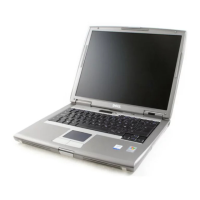
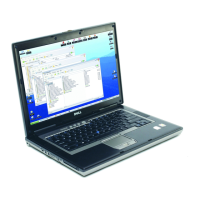

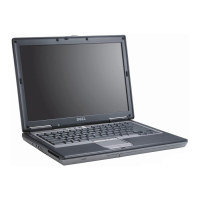
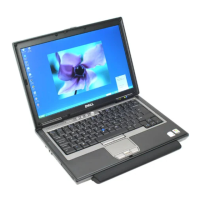
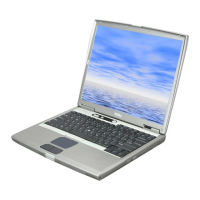
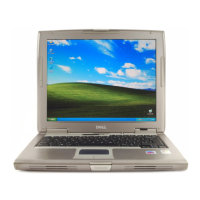


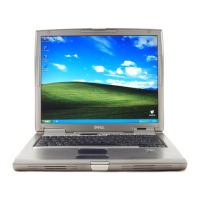


